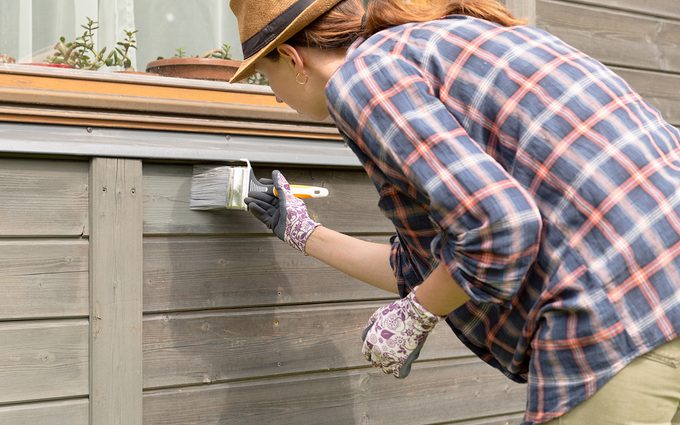Behind every great-looking painted surface there’s almost certainly a coat of quality paint primer. As an undercoat, primer prepares the surface, promotes paint adhesion and serves as a foundation that will make paint look better and last longer. Although not every painting project requires primer, taking this step will enhance your results.
Typically, DIYers looking to save time and money consider skipping the primer stage. It’s OK to do so if your surface is in good, clean condition and if you’re using a paint color that’s similar to the one you’ll be covering. But you can never go wrong by priming first. The results will be worth the investment.
Primer Basics
Unlike paint, primer is not intended to be a durable outer layer. Instead, it’s engineered to adhere to and seal the surface, filling or covering imperfections and providing an ideal new surface for paint to bond to.
This is especially true if the previous coat of paint is glossy. Take an old enamel finish on interior window trim, for example. Even if that surface is in good condition, new paint may not adhere well to the glossy paint. But with a primed surface, your new finish coat of paint will appear smooth and even, with uniform color that will more closely match that sample you fell in love with at the store.
Other key reasons to use paint primer:
- Primers grip almost any surface. Are you painting something other than drywall? Using a primer first will prevent peeling and blistering when painting over ceramic tile, glass, PVC and other slick surfaces.
- Primers help tackle tough stains. In fact, a primer is essential if you’re painting to cover up water or smoke damage or your kids’ creative use of markers or crayons on a kitchen or playroom wall. Homeowners tend to try to remove stains before painting, but that’s often not possible without further damaging the surface, especially if the stain has penetrated the existing paint. A primer will create a seal over stains that would otherwise bleed or leach through a fresh coat of paint, even after several touch-ups.
- Primers seal porous surfaces. New wood, drywall, concrete and masonry should always be sealed with primer before painting. Bare wood will soak up paint like a sponge and can absorb paint solvents before the paint has a chance to fully cure. Water-based paints can raise the grain of a bare wood surface, and even cause it to warp or swell. For exterior painting projects, always spot-prime areas of wood exposed after scraping and sanding old paint.
KILZ® Primers Get the Jobs Done
Any DIY drywall project is bound to have a few minor imperfections in the surface. The good news is they can be mitigated with KILZ 3® Premium Interior | Exterior Primer. Its thick formula is designed to smooth over pockmarks and sanding lines, which the final paint would otherwise highlight.
For more-challenging situations, KILZ offers a number of specialty primer products. KILZ® Mold & Mildew Interior | Exterior Primer is a water-based primer, sealer and stain blocker formulated for high-humidity, -moisture and -temperature environments, such as kitchens, bathrooms and laundry rooms. It contains an EPA-registered active ingredient that creates a film that blocks heavy water stains and resists mold and mildew growth. In high-moisture rooms, a quality primer like KILZ Mold & Mildew also acts as a vapor barrier and inhibits moisture from passing through the wall, where it can cause exterior paint to blister or peel.
If sealing and eliminating odors left behind by pets, tobacco smoke, or fire or flood damage is in order, you’ll need a product like KILZ Restoration™ Interior Primer. This easy-to-use, water-based formula is designed to match the performance of traditional oil- and shellac-based primers. It can be used on almost any interior surface, including drywall, plaster and woodwork, and is also effective at covering water and smoke stains.
Finally, if you’re painting a new or old bare wood surface, you’ll need an oil-based exterior primer like KILZ® Original Interior | Exterior. This formula will also block tannin stains from cedar and redwood siding and trim that can bleed through standard primers, and then through the finish paint.
For expert advice on KILZ primer products and their application, see a paint retail professional. You can find a local KILZ dealer, painting tips and decorating ideas, and details on all KILZ primer products at Kilz.com.


